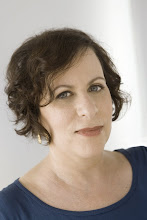David Arky On Still Life and X-Rays
David graciously agreed to talk about his work with me, and after a fascinating conversation in his beautiful midtown studio, I found out just what was behind his creative photography.


How did you come to photography?
I discovered photography in summer camp when I was 8. The magic of developing film and seeing my first print emerge under a safelight has never left.
Tell us about your background including family/science connection
My family members were always interested in the sciences – my dad, uncle and older brother were all pharmacists and I also had an uncle who was a physician, painter and inventor. I was captivated by his still life paintings at a tender age. My relatives would get together and speak in their native Hungarian, and since I didn’t understand a word of what they were saying, I found myself getting interested in the artwork on the walls.
So how did you get into still life?
At the beginning of my career, my former business partner, John Barrett and I shot a variety of assignments for the covers of Esquire, National Lampoon and a variety of trade magazines. We built sets, shot people in the studio and on location, as well as still life. Even though I admired the other work we did, I always returned to my first passion of still-life.
How did you get into x-rays? Is it difficult? Scary? What was it like when you saw the first results?

Michael McGinn, a very talented graphic designer asked me if I could create some x-ray images for a campaign that he was producing for Strathmore paper. The concept was that we would be seeing 3 different briefcases as they passed through an airport x-ray machine, to reveal Strathmore paper inside.
I had no idea if it was possible and asked Michael for two weeks to test the idea out. After a lot of research, we found an x-ray lab that I could use to shoot the images. The lab was straight out of the 1950’s – There was a box with “Buck Rogers” looking dials and switches that operates x-ray camera.
Yes, working with x-rays was frightening at first, but after I realized that there was 3 feet of concrete separating us from the x-ray source, I finally relaxed.

The first x-ray shots that we produced rekindled the feelings that I had as a kid when those prints came up in the darkroom trays. Seeing the x-ray film come out of the processor is still an oh-ah moment for me.
Is photography a solitary or collaborative pursuit for you?
I used to think that being a still-life photographer was a solitary pursuit, and imagined a painter working alone in a garret or skylit studio. I quickly came to the realization that my best images were the result of collaboration. The props that my stylist chose, the suggestions that my photo assistant made, the skills that my retouched had developed to nuance details, all contributed to the strength of the final image.
Talk about the process of the work you do

Most editorial assignments begin with a conversation to help understand what is the concept of the story. Reading through the text or story outline, is an ideal way to spark some ideas. I am sometimes asked to deliver a sketch of what I am thinking of, or a verbal description alone might be sufficient with a regular client. After the idea is approved, I get in touch with my prop stylist or model maker and have them source the props that we need for our shoot. I always use an assistant, since I feel that it is so important to collaborate, even on what might seem to be the simplest of shots. After the shoot I hand the images off to my retoucher, and often let him give me his ideas about how to enhance what we shot.

What differences are there between working on editorial and commercial projects?
Many times there are no differences – good photo editors, graphic designers and art directors want to work with someone who is a creative collaborator.
You don’t have a rep, can you talk about that in terms of how important or unimportant you think that is
I don’t think that having a rep is absolutely necessary for editorial assignments, as long as you have a studio manager or office assistant who can help you get your work out in the marketplace through email marketing campaign and print promotion.
I think that in order to get regular advertising assignments, having a rep is essential in getting your work in front of art buyers, negotiating fees and acting as a go between the photographer and client.
You teach at ICP--what is that like for you?
I have taught a studio lighting class at ICP for nine years now and really love it. I enjoy sharing my passion for photography with my students, who by the way come to ICP from all over the world. It’s very stimulating when students work together in my studio, experimenting with lighting techniques and bring in great work to discuss during our critiques.
What are you working on now?
I just finished my second cover still life shoot for Newsweek, as well as an x-ray project for AARP magazine. I have always been shooting an ongoing still life project for Comcast.

Labels: david arky, stella kramer, stellazine, still life photography, x-ray photography











1 Comments:
I really like your blog and i really appreciate the excellent quality content you are posting here for free for your online readers. thanks peace dale tuck
Post a Comment
Subscribe to Post Comments [Atom]
<< Home